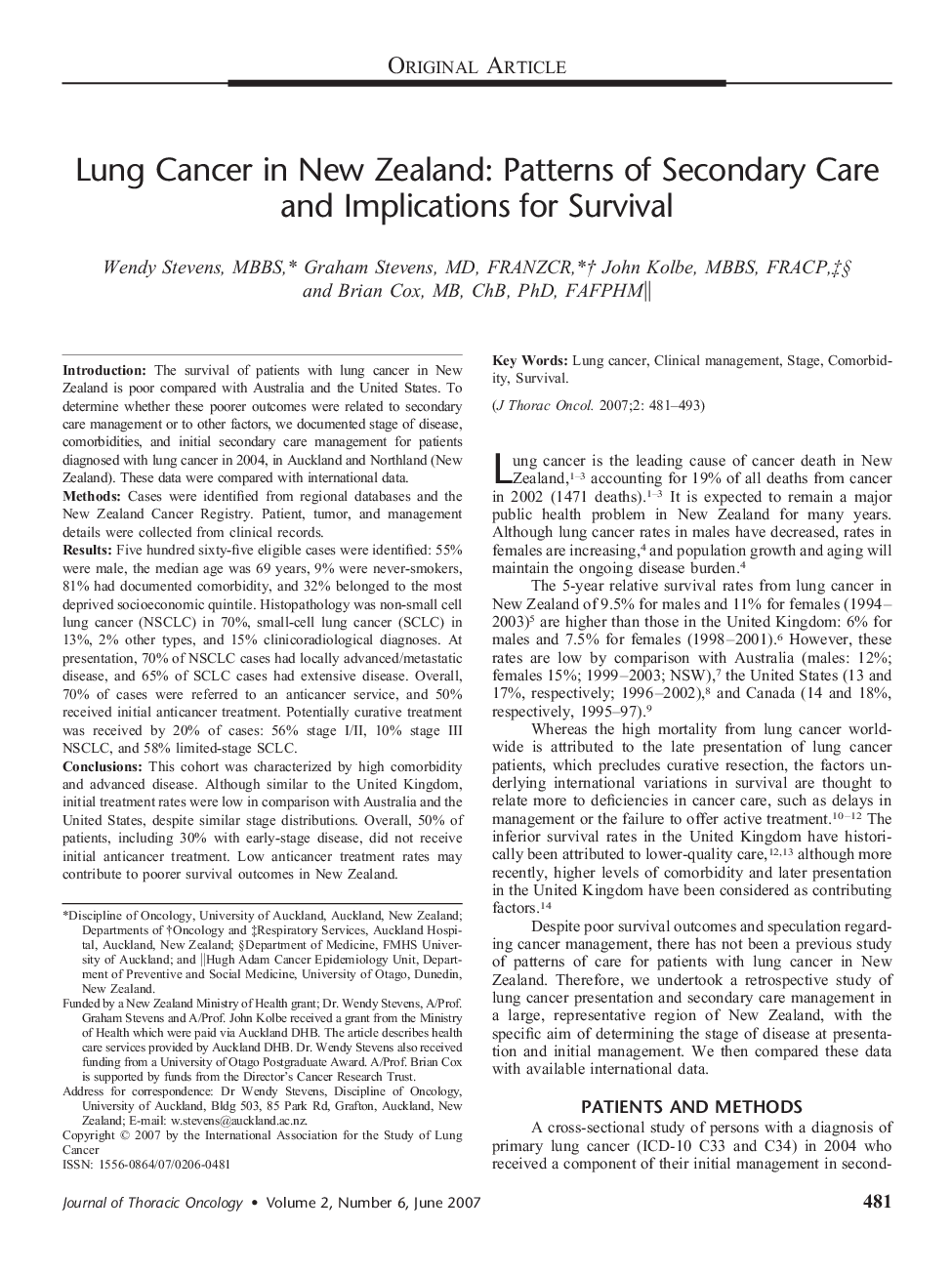| Article ID | Journal | Published Year | Pages | File Type |
|---|---|---|---|---|
| 3992623 | Journal of Thoracic Oncology | 2007 | 13 Pages |
IntroductionThe survival of patients with lung cancer in New Zealand is poor compared with Australia and the United States. To determine whether these poorer outcomes were related to secondary care management or to other factors, we documented stage of disease, comorbidities, and initial secondary care management for patients diagnosed with lung cancer in 2004, in Auckland and Northland (New Zealand). These data were compared with international data.MethodsCases were identified from regional databases and the New Zealand Cancer Registry. Patient, tumor, and management details were collected from clinical records.ResultsFive hundred sixty-five eligible cases were identified: 55% were male, the median age was 69 years, 9% were never-smokers, 81% had documented comorbidity, and 32% belonged to the most deprived socioeconomic quintile. Histopathology was non-small cell lung cancer (NSCLC) in 70%, small-cell lung cancer (SCLC) in 13%, 2% other types, and 15% clinicoradiological diagnoses. At presentation, 70% of NSCLC cases had locally advanced/metastatic disease, and 65% of SCLC cases had extensive disease. Overall, 70% of cases were referred to an anticancer service, and 50% received initial anticancer treatment. Potentially curative treatment was received by 20% of cases: 56% stage I/II, 10% stage III NSCLC, and 58% limited-stage SCLC.ConclusionsThis cohort was characterized by high comorbidity and advanced disease. Although similar to the United Kingdom, initial treatment rates were low in comparison with Australia and the United States, despite similar stage distributions. Overall, 50% of patients, including 30% with early-stage disease, did not receive initial anticancer treatment. Low anticancer treatment rates may contribute to poorer survival outcomes in New Zealand.
